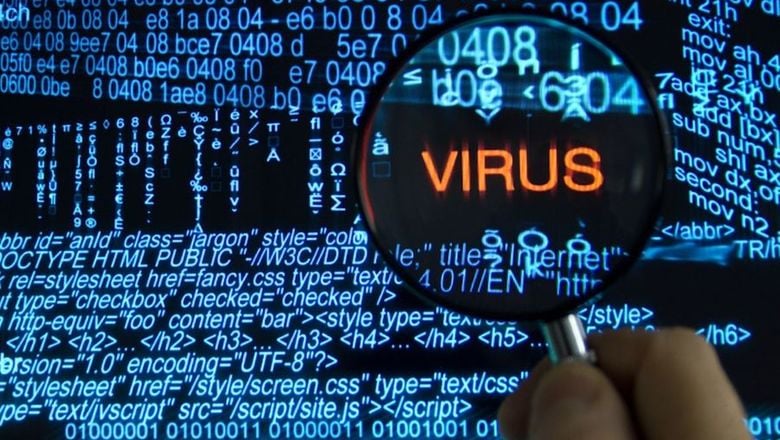Šodien visā pasaulē hakeri veiksmīgi iekļūst visāda veida tīmekļa vietnēs. Tīmekļa vietnes, kas izveidotas, izmantojot WordPress, ir visneaizsargātākas pret hakotēšanu, neatkarīgi no tā, uz kādu tīmekļa servera tās atrodas.
Šī problēma ir sasniegusi augstu draudzības līmeni, tāpēc šajā rakstā mēs runāsim par rīcību, ko veikt gadījumā, ja jūsu tiešsaistes resurss, izmantojot WordPress, Joomla, Datalife vai kādu citu populāru dzinēju, jau ir hakots.
Iekļūšanas iemesls
Pirmkārt, jums jāsaprot iemesli, kādēļ vietnes tiek hakotas. Jebkurš interneta resurss (neatkarīgi no tā, vai tas ir populārs vai ne, jauns vai vecs, ienesīgs vai neienesīgs) var sniegt potenciālu ieguvumu uzbrucējam, jo hakotās vietnes var kalpot šādiem mērķiem:
- sūtīt spēmus;
- nosūtīt vietnes apmeklētājus uz citām vietnēm (piemēram, lai veiktu zvejniecību);
- izplatīt vīrusus lietotāju datoros un nozagt tos dati;
- hakot citas vietnes īpašnieku tīmekļa vietnes;
Un tas nav viss. Visbiežāk vietnes tiek hakotas grupās un automatizētā režīmā. Robots interneta pārvietojas meklējumos pēc vietnēm ar konkrētām neaizsargātībām, tos skenē un sāk hakot.
Turklāt dažas vietnes tiek inficētas izveidošanas procesā, kad nesavaldīgi programmētāji izmanto savā darbā bezmaksas tehnoloģijas no nepārbaudītiem avotiem. Hakeri bieži inficē bezmaksas moduļus un izvieto tos internetā kā vilinājumu.
Tāpēc jautājumi, piemēram: “Kāpēc mana vietne tika hakota?”, “Kam uz Zemes ir nepieciešams mans interneta resurss?”, ko jautā vietnes īpašnieks pēc iekļūšanas, nav specifiska atbilde.
Drošības pārkāpuma pazīmes
Pirmajā brīdī jūs varat neievērot iekļūšanu, jo pirmajā acu uzmetienā visas vietnes darbosies normāli. Tāpēc ir nepieciešams mācīties, kā to noteikt. Visvienkāršākā hakota pazīme ir, ka vietnē ir hakota attēls. Turklāt ir arī citas pazīmes, ieskaitot:
- nezināmu failu parādīšanās direktorijā, kurā atrodas vietne;
- sveša koda parādīšanās vietnes ķermenī vai failos;
- pieslēdzoties vietnei no datora vai mobilā ierīce, jūs tiekat novirzīts uz citu vietni;
- pieslēdzoties vietnei, starp pārlūkiem un pretvīrusu programmatūrām notiek “konflikts”, rezultātā vietne tiek apzīmēta kā bīstama.
Ja jūsu vietnē ir minētās pazīmes, jūs varat būt droši, ka tā ir hakota. Visbiežāk šādi tiek uzbrukti populāri dzinēji, piemēram, WordPress, Joomla, Datalife un citi. Jau tagad ir jānorāda, ka vietējo sekas likvidēšana nav jēga – sveša faila dzēšana no saknes direktorijas, ievietotā elementa no veidnes noņemšana un jauna koda no .htaccess noņemšana ir veltīga.
Pēc “visu” dzēšanas simptomi atkal parādīsies dažu stundu laikā. Lai gan visbiežāk vietņu īpašnieki vaino tīmekļa serverus, lai gan kā likums, šie ir pēdējie, kas vainojami. Intrūders automātiski iegūst visus nepieciešamos datus, lai atkal piekļūtu vietnei, ja vismaz viens ļaunprātīgs fails paliek kontā. Zemāk mēs jums pastāstīsim, ko darīt, lai pilnīgi atbrīvotos no vīrusa.
Pārkāpuma sekas
Negatīvas sekas, ja netiek veikta darbība, var būt ļoti dažādas, proti:
- meklēšanas motoru liegums;
- apmeklējuma līmeņa samazināšanās;
- sūdzību saņemšana par jums uz varas iestādēm (kavējot uz krāpniecisko vietni);
- tīmekļa servera bloķēšana (konta spama vai uzbrukuma citām vietnēm gadījumā).
Skaidrs, ka jums tas nav vajadzīgs. Tāpēc mēģiniet ātri risināt problēmu, organizējot konta savlaicīgu tīrīšanu.
Kas jādara?
Kontu tīrīšanas sarežģītība ir nepieciešamība pilnībā izņemt visus ļaunprātīgos failus un svešos kodus, jo, dzēšot tikai vienu no tiem, noziedznieks turpinās brīvi piekļūt jūsu vietnei.
Tas ir labi, ja jums vienlaikus ir vesels dublējums, kurā nav hakota pazīmju. Jo ar vienādiem soļu secības dublējums vienkāršo jūsu darbu.
1. solis. Nepieciešamās informācijas saglabāšana
Vispirms jums jāsaglabā datu bāze. To nav iespējams inficēt ar vīrusu (izņēmums ir tikumības trūkums, ja kodu ievieto ziņās, kas notiek ļoti reti). Pārliecinieties, ka augšupielādes un attēlu mape nesatur PHP vai kādus citus izpildes failus.
Saglabājiet visus citus failus šādās mapēs. Tomēr atcerieties, ka vīrusa atgriešanās uz jūsu vietnes palielināsies, ja tiks saglabāti vairāk dati. Tāpēc turiet visu minimāli. Jūs varat izmantot savu veselu dublējumu, ja tas jums pilnībā atbilst.
2. solis. Vispārēja aktīvā konta tīrīšana
Tad jums jādzēš viss. Rakstiet uz tīmekļa servera par savu vēlēšanos atjaunot kontu tā sākotnējo stāvokli, jo pēc parastas failu dzēšanas no vietnes mapi, jūs varat tos aizmirst citur, kas nozīmē darbību beztamāču.
3. solis. Atjaunošana
Ja jums ir dublējums, augšupielādējiet to. Un tad atjaunojiet izplatīšanas dzinēja jaunāko versiju.
Ja dublējuma nav, jums jālejupielādē izplatīšanas jaunākā versija no dzinēja oficiālajā vietnē. Jums ir jāaugšupielādē arī veidnes, datu bāze un katrs saglabātais fails, pārbaudot visu manuāli un ar antivirusu palīdzību.










